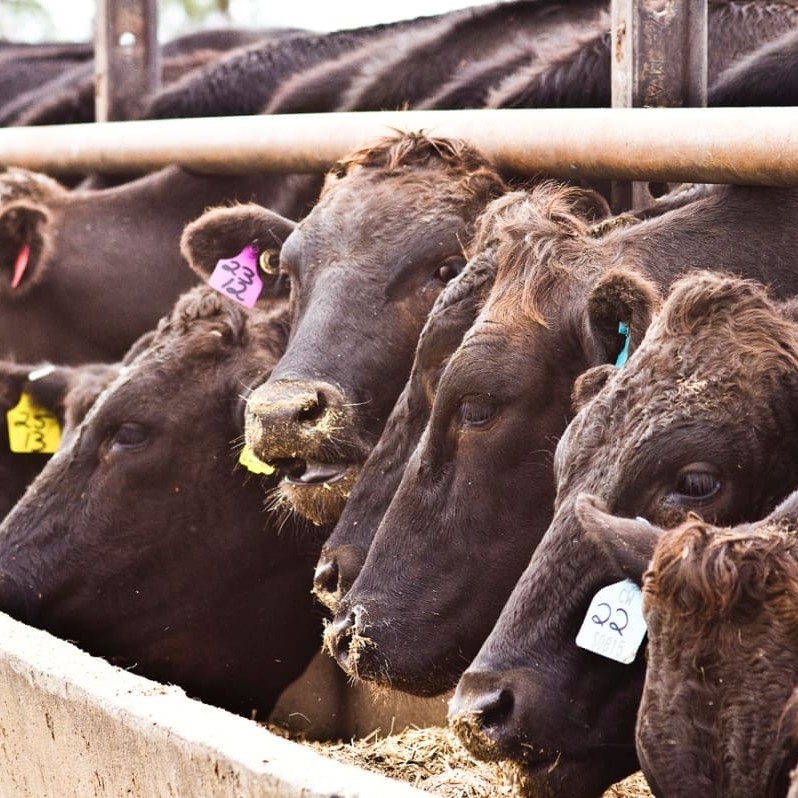 A rise in feeder cattle prices has impacted on Beef Central’s latest breakeven and trading profit projection on 100-day grainfed cattle carried out yesterday.
A rise in feeder cattle prices has impacted on Beef Central’s latest breakeven and trading profit projection on 100-day grainfed cattle carried out yesterday.
A budget based on our standard 100-day grainfed beast placed on feed yesterday and exiting the feedyard in July, week one, suggests a negative $50 trading result, based on current variables.
While the end result has not varied greatly from the outcome delivered in our last breakeven performed on February 23, there has been movement in some of the variables within the formula.
The latest result continues a sequence of poor trading budget projections, evident since the recent high-point back in late October last year when we forecast a +$1 trading result.
While feeder cattle prices are strengthening a little since our last report, forward prices on finished 100-day ox are moving upwards as well, providing a counteracting effect.
For yesterday’s calculation, the buy price for a crossbred steer ex Darling Downs was pencilled-in at 200c (some might argue that 195c is the market today, but Beef Central thinks it prudent to use 200c as being more reflective of the current sentiment and direction in the market).
That represents a rise of 10c on the last breakeven a month ago, and partly signals the reinvigorated demand from grass finishers, facing another strong grass-growing season. It also reflects the difficulty lotfeeders were having securing feeders at earlier lower rates in the 185s-190s.
There appears to be a consensus across feedlots that while the current forward finished cattle market is still pretty flat, if they want to secure feeders they can’t do it with a 185 or 190.
At 200c, that values our 450kg steer at $900 – a little more expensive than February ($855), but still better than our year-opening, January 9 steer value of $967.
At prices closer to 200c, more breeders will be tempted to turn off young cattle as feeders, rather than take them through to bullock weights on grass, reliable trade sources said yesterday.
Those margins are still not as good as three months ago, however, when there were still hefty premiums evident for turning steers off as feeders, rather than retaining for grass-finishing.
Feeders back then were worth 230c/kg, while grassfed ox were fetching 340c dead. Today that same grassfed ox is still worth 340c (345c for 0-2 tooth).
Getting back to this week’s trading result analysis, while grain prices have weakened a touch, finished ration price in yesterday’s calculation remains the same at $245/t, using all new-season, predominantly white grains. Sorghum prices would mean a slightly lower ration price, however consumption would be compromised a little. Having said that, some feedlot managers with access to flakers may be buying new-season sorghum at prices around $175/t, delivered.
Total production cost yesterday was calculated at $1376, about $46 more than February 23 figures, due primarily to higher flatback feeder steer purchase price. It also factors in a 1pc mortality rate in the yard and typical implant program.
All that presents a breakeven figure of 390c/kg dressed weight, up from 377c/kg a month ago, for 100-day grainfed steers going on feed yesterday and closing-out July, week one.
Export meatworks forward pricing on 100-day cattle are currently in the 370s, firming slightly on our last breakeven but still a long way from forward sale prices of 400c/kg applied in our January 9 assessment.
Today’s forward price for early July, placed over our breakeven figure, indicates a trading loss of about $50 a head.
So where do things go from here? Unless the margin in the feeder steer price versus the grass-finished ox option is maintained, it’s hard to see significant numbers flowing back into feed yards over the next three months, given the season we are now facing.
Interestingly, some feedlots are currently offering forward pricing on feeder cattle, typically out four weeks, at more aggressive prices than have been seen for some time. In some cases, forward pricing is being offered by feedlots that have never previously offered this option.
The reason? Perhaps having low inventory, and being behind other competitors on rate; and perhaps seeing the first glimmer of more favourable grainfed market conditions heading into the middle of the year – and perhaps a little earlier than would be seen under normal yearly seasonal cycles.
Heaven knows, the grainfed sector needs a little change in market sentiment.
- Beef Central's regular 100-day grainfed breakeven scenario is based on a representative standard set of production variables, ex Darling Downs. They include a 356kg dressed weight; average daily gain of 2kg; consumption 15kg and a feed conversion ratio of 7.5:1 (as fed); $25 freight; interest component. It is important to note that variations exist across production models (feed conversion, daily gain, mortality, morbidity, carcase specification); from feedlot to feedlot; and between mobs of cattle. For a more specific performance forecast on a given mob of cattle, consult with your preferred custom feeder.
- Read Beef Central’s last February 24 breakeven/trading budget report here
